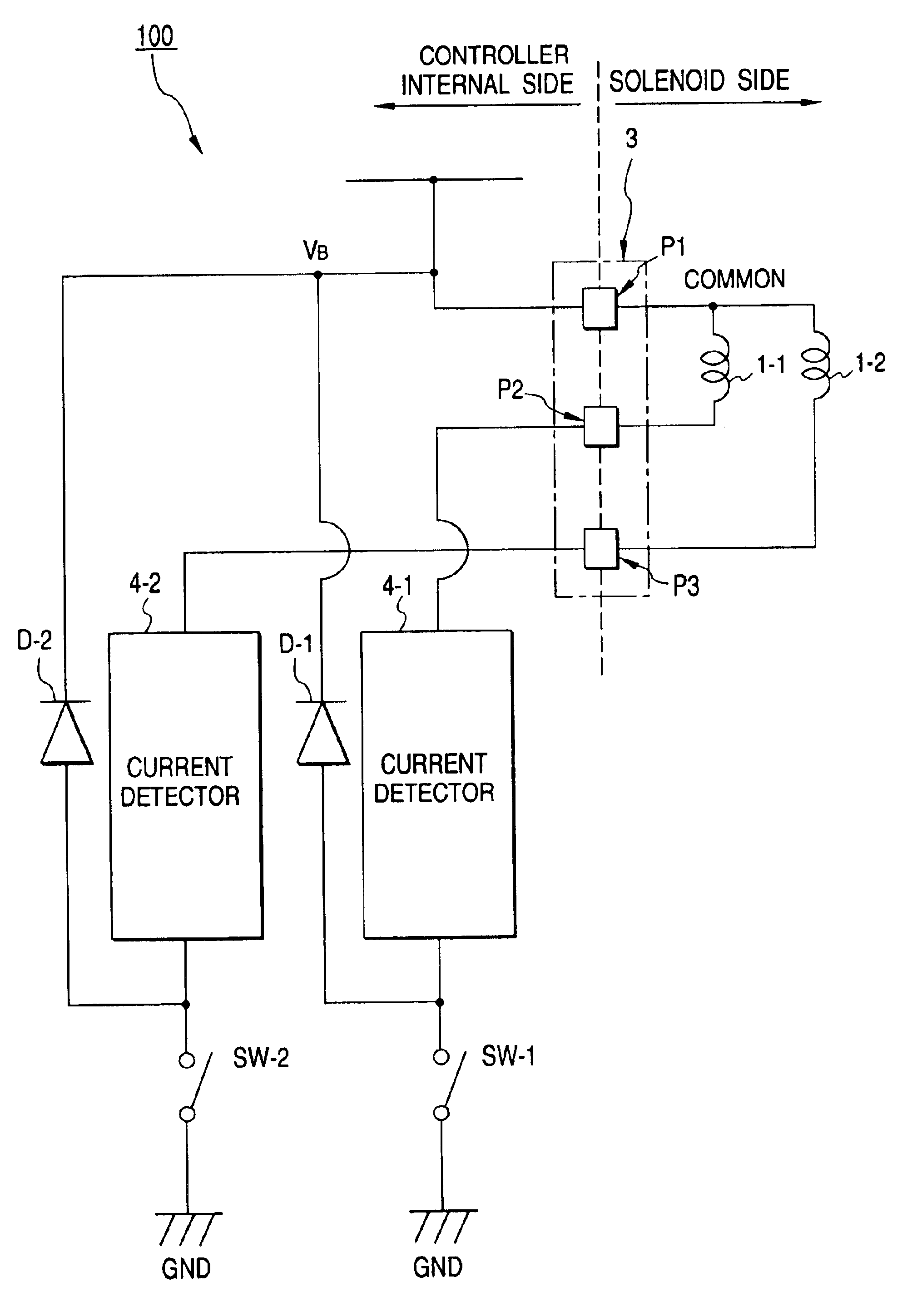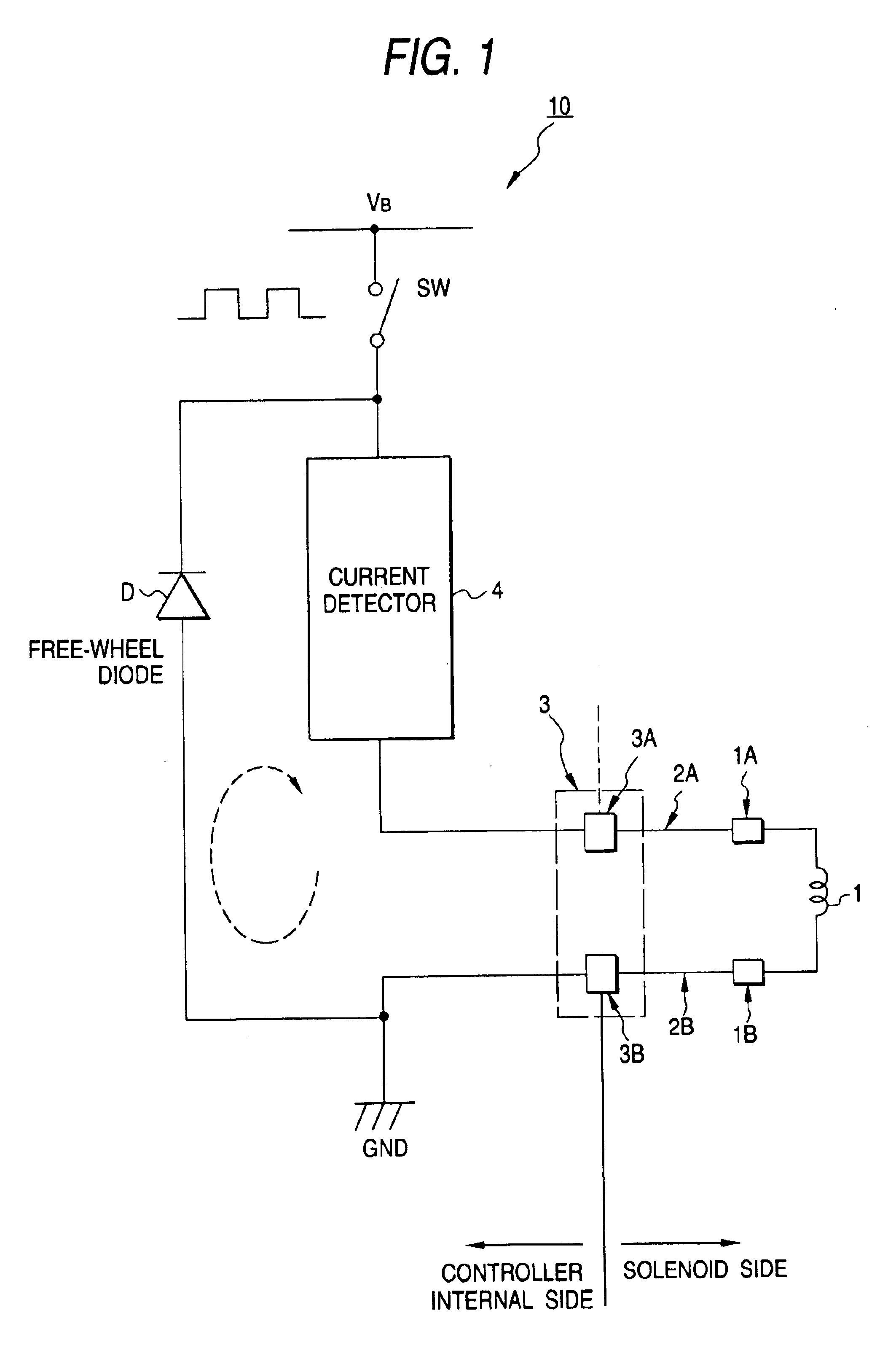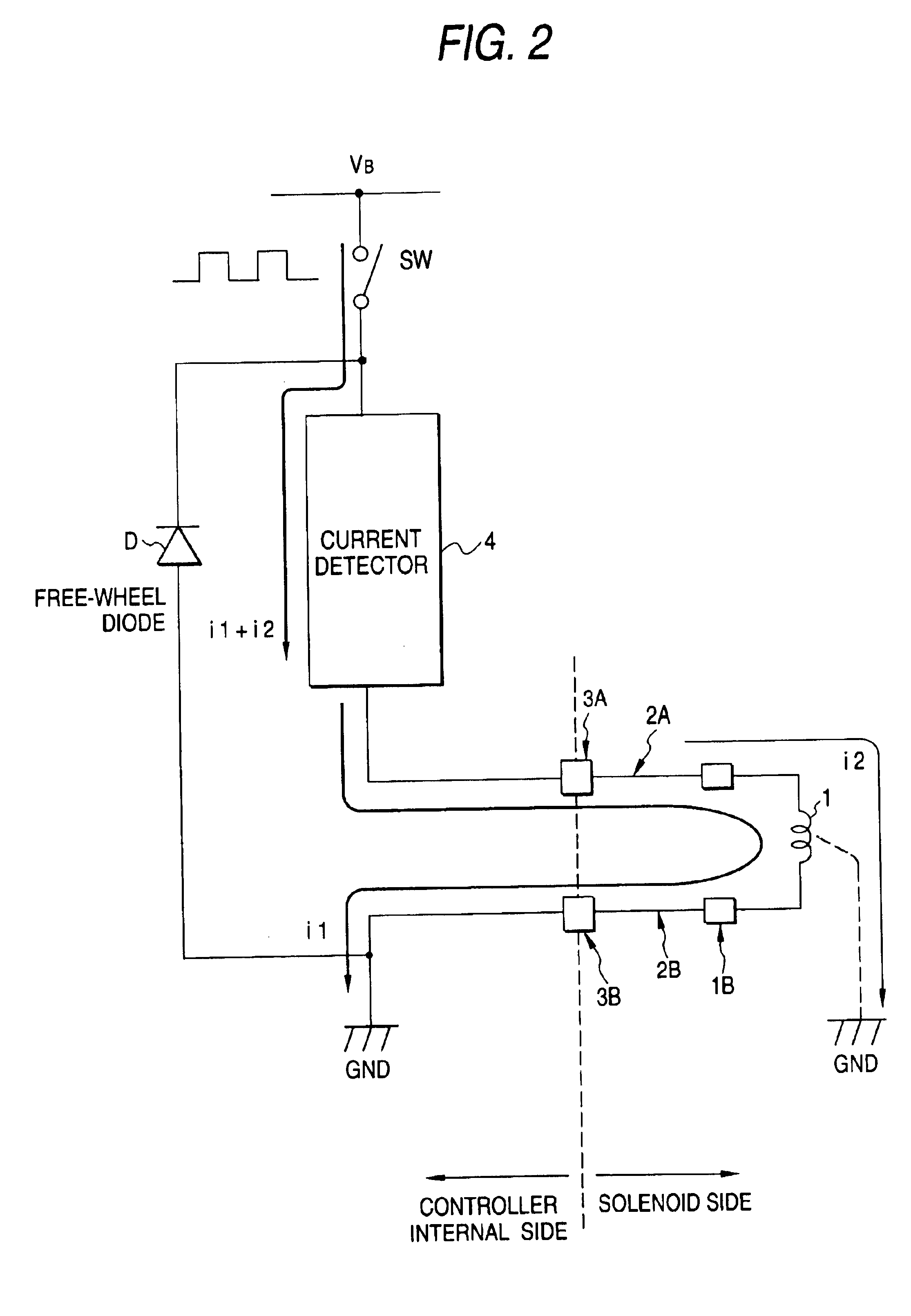Solenoid driving device
a solenoid and driving device technology, applied in the direction of magnets, emergency protective arrangements for limiting excess voltage/current, magnetic bodies, etc., can solve the problem of increasing the number of signal lines with the increase of solenoid numbers, and achieve the effect of reducing the terminal number of the connector and reducing the imperfect contact accordingly
- Summary
- Abstract
- Description
- Claims
- Application Information
AI Technical Summary
Benefits of technology
Problems solved by technology
Method used
Image
Examples
second embodiment
[Second Embodiment]
This second embodiment is different from the first embodiment in that the current detector has a different construction.
FIG. 15 is a construction diagram showing a circuit construction of the current detector 40 in a solenoid driving device according to the second embodiment.
This current detector 4 is constructed by eliminating the two transistors Tr1 and Tr2 and the two resistors R3 and R4 from and by adding an operation amplifier 61 and resistors R61 and R62 to the construction of the current mirror 30 of the current detector 4 in the first embodiment shown in FIG. 10. Here in FIG. 15, the portions for performing the same functions as those of the components shown in FIG. 10 are designated by the common reference numerals.
The operation amplifier 61 is connected at its − input terminal with the drain of the field effect transistor FET and one end of the resistor R61, at its + input terminal with one end of the resistor R62, and at is output terminal with the othe...
third embodiment
[Third Embodiment]
This third embodiment is different from the first and second embodiments in that the construction of the detector power source is different.
FIG. 16 is a construction diagram showing a circuit construction of the detector power source E in a solenoid driving device according to a third embodiment.
This detector power source E is constructed by eliminating the diode D40 and the power source E40 from the detector power source E shown in FIG. 11. Here in FIG. 16, the portions for performing the same functions as those of the components shown in FIG. 11 are designated by the common reference numerals.
In the detector power source E according to the third embodiment, as shown in FIG. 16, the electrolytic capacitor C40 is fed with a voltage from the load power source VB so that the charging current flows.
In this detector power source E, too, as in the detector power source E of the first embodiment shown in FIG. 11, the supply voltage of the load power source VB is applied ...
fourth embodiment
[Fourth Embodiment]
This fourth embodiment is different from the first to third embodiments in that the construction of the current / voltage converter is different.
FIG. 19 is a construction diagram showing a construction of the current / voltage converter 5 in a solenoid driving device according to the fourth embodiment.
In this current / voltage converter 5, as shown in FIG. 19, an operation amplifier 81 is connected at its + input terminal with the anode side of a DC power source E80, the cathode side of which is connected with the GND, at its − input terminal with one end of a resistor R82 and the output signal line [1], and at its output terminal with the other end of the resistor R82 and the output signal line [2].
Here will be described the actions of the current / voltage converter 5.
Here, it is assumed that the DC power source E80 has a voltage value Vin and that the resistor R82 has a resistance r82.
For example, it is assumed that the electric current i3 according to the product of t...
PUM
| Property | Measurement | Unit |
|---|---|---|
| voltage drop | aaaaa | aaaaa |
| voltage | aaaaa | aaaaa |
| supply voltage | aaaaa | aaaaa |
Abstract
Description
Claims
Application Information
 Login to View More
Login to View More - R&D
- Intellectual Property
- Life Sciences
- Materials
- Tech Scout
- Unparalleled Data Quality
- Higher Quality Content
- 60% Fewer Hallucinations
Browse by: Latest US Patents, China's latest patents, Technical Efficacy Thesaurus, Application Domain, Technology Topic, Popular Technical Reports.
© 2025 PatSnap. All rights reserved.Legal|Privacy policy|Modern Slavery Act Transparency Statement|Sitemap|About US| Contact US: help@patsnap.com



